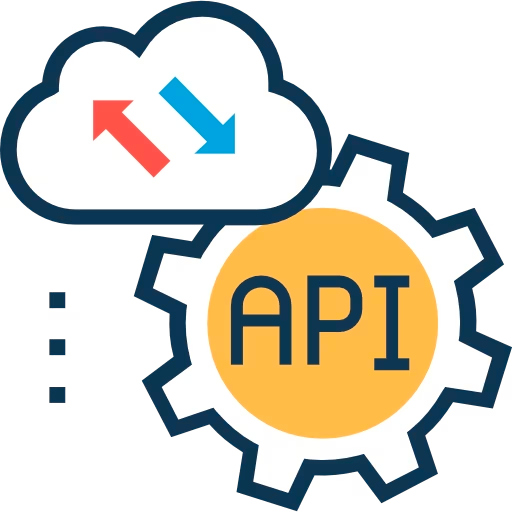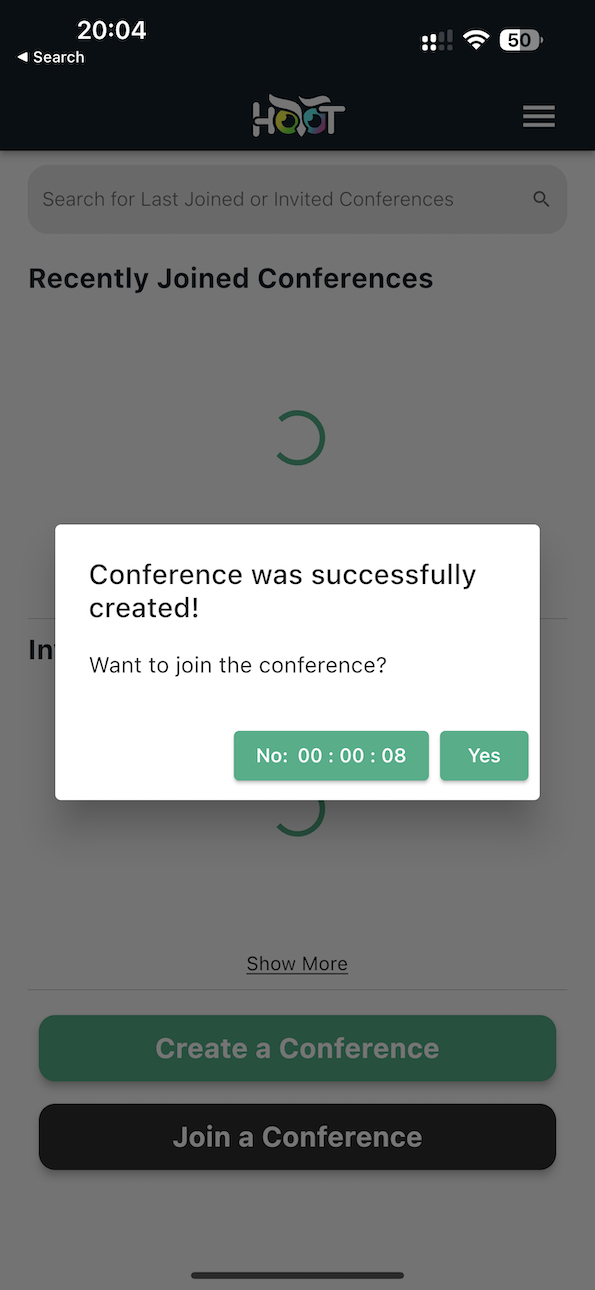HooT uses OpenID Connect for Authentication & Authorization.
OpenID Connect (OIDC) is an authentication protocol that is built on top of OAuth 2.0. It allows for the authentication of users by using JSON Web Tokens (JWTs) to transmit identity information between an identity provider (IdP) and a client application.
In OIDC, the client application initiates the authentication request by redirecting the user to the IdP. The user then authenticates with the IdP, which then returns a JWT containing information about the user to the client application. The client application can then use this JWT to authenticate the user for subsequent requests.
OIDC is designed to be a simple and secure authentication protocol that is easy to implement and use. It also provides features such as session management, allowing users to remain authenticated across multiple applications, and support for multi-factor authentication, providing an additional layer of security for user authentication.
API Authentication
API authentication using OpenID Connect is a popular approach to securing APIs. OpenID Connect is a simple identity layer built on top of the OAuth 2.0 protocol, and it provides a standard way for clients to authenticate users and obtain their profile information.
To use OpenID Connect for API authentication, you would typically follow these steps:
Configure your API to require authentication using OpenID Connect. This can typically be done by adding an authentication middleware to your API's request pipeline.
Configure an OpenID Connect provider (such as Auth0) to issue access tokens that can be used to authenticate requests to your API. You'll typically need to register your API with the provider and configure some settings to indicate which scopes and permissions are required for accessing your API.
When a client makes a request to your API, it must include an access token in the Authorization header of the request. This token is obtained by authenticating the user via the OpenID Connect provider and obtaining an access token from the provider's token endpoint.
Your API should validate the access token to ensure that it is valid and has the required scopes and permissions to access the requested resource.
If the access token is valid, your API should process the request and return the appropriate response.
Overall, using OpenID Connect for API authentication can provide a secure and scalable way to protect your APIs and ensure that only authorized clients can access them.
Client Credentials for System Accounts
In OpenID Connect (OIDC), client credentials are a type of OAuth 2.0 client authentication mechanism that can be used to obtain an access token for a client application without involving a user.
When using client credentials, the client application sends a request to the authorization server (or OIDC provider) with its own client identifier and client secret. The authorization server then verifies the credentials and issues an access token to the client application.
Client credentials can be used in a variety of scenarios, such as when a client application needs to access resources on behalf of itself (rather than a user), or when a client application needs to access a protected resource that doesn't require user consent (such as a public API).
To use client credentials with OIDC, the client application must be registered with the authorization server and have a client identifier and client secret. The client application then sends a token request to the authorization server's token endpoint with the following parameters:
grant_type=client_credentials
client_id= (the client identifier)
client_secret= (the client secret)
scope= (optional scope requested by the client application)
The authorization server then responds with an access token that can be used to access the requested resources.
It's important to note that client credentials are not intended to be used as a replacement for user-based authentication. Client applications should only use client credentials when they need to access resources on behalf of themselves and not on behalf of a user.
Golang Code Sample for Client Credential Generation
package main
import (
"bytes"
"encoding/json"
"net/http"
)
func main() {
// Set up the request parameters
clientID := "<your_client_id>"
clientSecret := "<your_client_secret>"
audience := "<your_api_audience>"
tokenURL := "https://<your_auth0_domain>/oauth/token"
// Build the request body
requestBody, err := json.Marshal(map[string]string{
"client_id": clientID,
"client_secret": clientSecret,
"audience": audience,
"grant_type": "client_credentials",
})
if err != nil {
panic(err)
}
// Send the request to the token endpoint
response, err := http.Post(tokenURL, "application/json", bytes.NewBuffer(requestBody))
if err != nil {
panic(err)
}
defer response.Body.Close()
// Parse the response body into a map
var responseBody map[string]interface{}
err = json.NewDecoder(response.Body).Decode(&responseBody)
if err != nil {
panic(err)
}
// Extract the access token from the response
accessToken := responseBody["access_token"].(string)
useAcceessToken(accessToken)
// Use the access token to make requests to your API
// ...
}
func useAcceessToken(token string) {
}
Python Code Sample for Client Credential Generation
import requests
import json
client_id = '<your_client_id>'
client_secret = '<your_client_secret>'
audience = '<your_api_audience>'
token_url = 'https://<your_auth0_domain>/oauth/token'
# Build the request body
payload = {
'client_id': client_id,
'client_secret': client_secret,
'audience': audience,
'grant_type': 'client_credentials'
}
headers = {'content-type': 'application/json'}
# Send the request to the token endpoint
response = requests.post(token_url, data=json.dumps(payload), headers=headers)
response.raise_for_status()
# Extract the access token from the response
access_token = response.json()['access_token']
# Use the access token to make requests to your API
# ...
Auth0
Auth0 is a cloud-based authentication and authorization service that enables developers to easily implement secure user authentication and authorization in their applications. It provides features such as single sign-on (SSO), multifactor authentication (MFA), social login, and user management.
With Auth0, developers can integrate authentication and authorization capabilities into their applications using standard protocols such as OAuth 2.0, OpenID Connect, and SAML. Auth0 also provides libraries and SDKs for various programming languages and frameworks to make integration easier.
Auth0 is designed to be flexible and customizable, allowing developers to implement authentication and authorization in a way that meets their specific needs. It also provides analytics and reporting features to help developers understand how users are interacting with their applications.
Auth0 is used by thousands of companies and organizations, from startups to large enterprises, across a wide range of industries.
Attack prevention using Auth0
Auth0 provides several security features that can help prevent attacks on your application, such as:
Multi-Factor Authentication (MFA): Auth0 supports various forms of MFA, including email, SMS, and authenticator apps. By requiring users to provide a second factor of authentication, you can greatly reduce the risk of unauthorized access.
IP Address Allowlisting and Denylisting: You can configure your Auth0 tenant to allow-list or deny-list specific IP addresses, helping to prevent unauthorized access from specific locations.
Brute-Force Protection: Auth0 provides built-in protection against brute-force attacks by limiting the number of failed login attempts and locking out users who exceed this threshold.
Password Policies: You can configure password policies in Auth0 to enforce strong passwords and prevent common password attacks, such as dictionary attacks.
Token Expiration and Revocation: Auth0 tokens have a built-in expiration time, and you can also revoke tokens manually if necessary. This helps prevent unauthorized access if a token is lost or stolen.
Suspicious Activity Detection: Auth0 monitors login activity and can detect suspicious behavior, such as login attempts from unusual locations or multiple failed login attempts from the same user.
Custom Rules: Auth0 allows you to create custom rules that can perform additional security checks, such as verifying the user's IP address or checking for known malicious behavior.
In addition to these features, Auth0 also provides regular security updates and patches to help prevent new and emerging security threats. It's important to keep your Auth0 configuration up to date and follow security best practices to ensure the highest level of security for your application.
Suspicious Activity Detection
Auth0 uses various mechanisms to detect suspicious activity and help prevent unauthorized access to your application. Here are some ways in which Auth0 detects suspicious activity:
Abnormal Behavior Detection: Auth0 monitors login activity and uses machine learning algorithms to detect abnormal behavior, such as login attempts from unusual locations, IP addresses, or devices.
IP Anomaly Detection: Auth0 uses IP anomaly detection to identify and flag IP addresses that show signs of suspicious activity, such as a high volume of failed login attempts or unusual patterns of behavior.
Rate Limiting: Auth0 enforces rate limiting to prevent brute-force attacks by limiting the number of failed login attempts from a single IP address.
User Behavioral Analysis: Auth0 analyzes user behavior to detect suspicious activity, such as multiple failed login attempts, login attempts at unusual times of day, or attempts to access protected resources without proper authorization.
Geolocation: Auth0 can track the geographic location of login attempts and flag suspicious activity from locations that are known for high levels of cybercrime.
Risk-Based Authentication: Auth0 can use a risk-based approach to authentication, taking into account factors such as the user's location, device, and behavior to determine the level of risk and adjust authentication requirements accordingly.
In addition to these mechanisms, Auth0 provides a dashboard where you can monitor login activity and detect suspicious behavior manually. Auth0 also provides alerting and notification mechanisms to help you respond to suspicious activity in a timely manner. Overall, Auth0 employs a combination of techniques to detect and prevent suspicious activity, helping to keep your application secure.
How secure is OIDC?
OpenID Connect (OIDC) is designed with security in mind and has several features that help make it a secure protocol for authentication and authorization.
Here are some ways in which OIDC can be secure:
Encryption: OIDC requires the use of Transport Layer Security (TLS) to encrypt all communication between the client application and the authorization server. This helps prevent eavesdropping, tampering, and other attacks.
Token-Based: OIDC uses tokens to convey identity and authorization information. Tokens are digitally signed and can be encrypted to protect them from tampering and unauthorized access.
Authentication: OIDC requires authentication of both the client application and the end user. This helps ensure that only authorized parties can access protected resources.
Authorization: OIDC provides fine-grained authorization through the use of scopes, which allow the client application to request access to only the resources it needs.
Standards-Based: OIDC is based on open standards such as OAuth 2.0 and JSON Web Tokens (JWTs), which have been widely adopted and tested in a variety of contexts.
That being said, the security of OIDC also depends on how it is implemented and configured. Developers and system administrators should follow security best practices, such as using strong passwords, keeping software up to date, and restricting access to sensitive resources.
Additionally, some security concerns have been raised around OIDC, such as the potential for phishing attacks and the need for secure token storage. It's important to be aware of these concerns and take appropriate measures to mitigate them.
With Auth0 and OIDC, HooT is equipped with the best and latest security standards.


